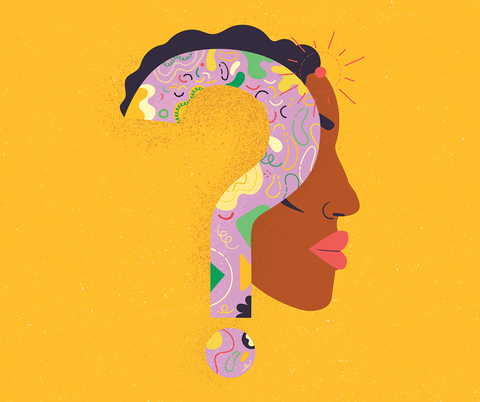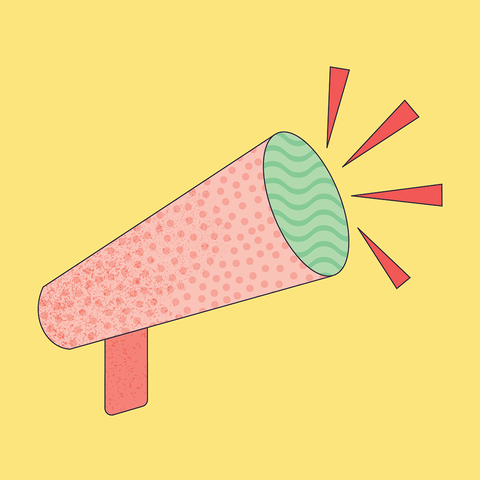Why Men Get Better Pain Treatment Than Women
Imagine your lower back hurts so much that you book a doctor’s appointment. During the visit, the physician asks a standard medical question: “How would you rate your pain on a scale of 0 to 10?” Whether you answer that it’s a persistent, irksome 3 or a debilitating 9, you assume your doctor will treat you according to your need.
But for too many women, that’s when a new kind of torment begins. Research suggests that health care providers are more likely to underestimate pain in women than in men, says Tina Doshi, M.D., an assistant professor of pain medicine at Johns Hopkins University School of Medicine. “Doctors may be less likely to perceive a given score as the true reflection of a woman’s experience, so an 8 out of 10 from a woman may prompt a different treatment than an 8 out of 10 from a man.” This can occur regardless of physician gender and despite studies that show that women are beset by more painful conditions — we have more headaches, lower-back and neck pain and painful autoimmune diseases. Research also shows that we report higher pain scores than men for similar ailments, which suggests that we feel our discomfort more intensely.
Although women are more likely to suffer from chronic pain, studies indicate that stereotypes play into how women are treated in the exam room, and that can affect our care. In one study, when medical students and clinicians saw videos of patients in chronic pain, they estimated women’s pain, on average, as lower than men’s — and were more likely to recommend psychological treatment to women and analgesics to men.
People of color fare even worse. Black ER patients were 40{a0ae49ae04129c4068d784f4a35ae39a7b56de88307d03cceed9a41caec42547} less likely than white ones to receive any analgesics for acute pain, and Hispanic ER patients were 25{a0ae49ae04129c4068d784f4a35ae39a7b56de88307d03cceed9a41caec42547} less likely, a 2019 review of 14 studies found. Those groups were also less likely to receive more powerful opiates.
As you might imagine, being both Black and a woman compounds the problem. “There’s this false belief that Black people in general feel less pain than white people,” says Elinor Cleghorn, author of Unwell Women: Misdiagnosis and Myth in a Man-Made World. “It comes from a rationalization of slavery and mistreatment of slaves in the 19th century, when Black people were considered less than human. As a result, while white women in pain risk being seen as overwrought, Black women often have to fight to have their pain acknowledged at all.”
Blind spots in the exam room
Some of the gap in pain treatment has to do with the kinds of conditions we experience. If an X-ray shows that your arm is broken, a doctor has some objective sense of your suffering. But what if you have abdominal pain, or an ambiguous disease like fibromyalgia, which causes widespread muscle pain and tenderness that can’t be detected by diagnostic tests? The doctor will ask you about your pain — and that’s when things can go wrong. “Most pain estimation is based on subjective report,” says Janice Sabin, Ph.D., a research associate professor at the University of Washington who studies implicit bias in health care. “Only the person experiencing it knows how it really feels, so health care professionals have a high degree of discretion in interpreting it.”
And when there’s increased discretion, unconscious biases rooted in sexism and racism are more likely to enter the equation, says Sabin. Most doctors, of course, are there to help, but a 2018 review of 77 pain studies from around the world found that health care professionals were more likely to view men who were in pain as stoic and to perceive women in pain as hysterical, emotional, complaining and even fabricating their pain. (The idea of “hysteria” comes from the Greek word for “uterus” and goes back several centuries, to when doctors believed a woman’s uterus could cause mental disturbances.)
Even people who aren’t medical professionals can underestimate a woman’s pain experience: In a study similar to the one conducted on doctors and med students, when laypeople watched men and women doing identical rehab exercises, “the perceivers rated the women as being in less pain and more likely to benefit from psychotherapy, while men, they said, would need medication,” says Elizabeth Losin, Ph.D., director of the University of Miami’s Social and Cultural Neuroscience Laboratory. “Our data suggests that people unconsciously discount women’s reports of pain based on widely held cultural stereotypes.”
Factor racial bias into the equation, and a Black woman’s pain may be taken even less seriously: A 2016 study found that 40{a0ae49ae04129c4068d784f4a35ae39a7b56de88307d03cceed9a41caec42547} of first- and second-year medical students and a quarter of medical residents — all of whom were white — believed that Black people literally had thicker skin than white people. Students who believed in that and other imaginary biological differences between Black and white people rated a hypothetical Black patient’s pain as lower and made less accurate treatment recommendations for the Black patient.
It’s not hard to see how these biases may lead to disaster. Take heart attacks, for example. “When women present with chest pain — and the latest research is clear that women are as likely as men to have chest pain during a heart attack — they have longer delays in care and treatment than men,” says Martha Gulati, M.D., president-elect of the American Society for Preventive Cardiology. “And the longer it takes to treat a heart attack, the more damage the heart will incur.”
Women have more “mystery” pain
Women with chronic pain — which is often caused by difficult-to-diagnose conditions — face the steepest challenges in getting the treatment they need. About 80{a0ae49ae04129c4068d784f4a35ae39a7b56de88307d03cceed9a41caec42547} of people with autoimmune diseases (like lupus and rheumatoid arthritis) are women, and research shows that on average, sufferers see five different doctors over five years before they get a correct diagnosis. Along the way, many are told that their pain and other symptoms are all in their heads or labeled as chronic complainers, according to a survey by the Autoimmune Association.
And chronic pain is complicated. “Many chronic-pain disorders don’t have an identifiable organic cause,” says Christin Veasley, cofounder and director of the Chronic Pain Research Alliance. That, combined with a long history of doctors discounting women’s pain or dismissing it as a normal part of being female, she says, leads to needless suffering. “Women bear the brunt of this problem,” says Robert Sorge, Ph.D., chair of the International Association for the Study of Pain’s Sex, Gender and Pain Special Interest Group. “What too many doctors fail to realize is that you can have a completely clear CT scan and still be in unbearable pain.”
It’s not just anecdotal — there’s research to back this up. “In our study, the disparities were greatest when the cause of the pain wasn’t readily verifiable, as in back pain and migraine,” says Salimah Meghani, Ph.D., a professor of nursing at the University of Pennsylvania School of Nursing whose 2012 meta-analysis looked at race-based disparities in pain treatment.
And untreated pain, Sorge says, “has serious negative effects on mental health, social interactions, cognitive function and ability to sleep and exercise, all of which takes a terrible toll.” Cleghorn can attest to this. She was told for seven years that her pain symptoms were “hormonal,” anxiety, poor lifestyle choices or even pregnancy. “I was never referred for diagnostic tests or blood work,” she says. “My description of my pain wasn’t enough to make it real in the eyes of my health care providers. I was made to feel like my pain was all in my head. It made me question myself, and it had a detrimental effect on my mental health.”
Get the Treatment You Deserve
Five things you can do to get better treatment and relief at the doc’s office.
- Come with an advocate. “Bringing someone with you to appointments can ensure that you ask the right questions and remember the answers,” says Penney Cowan, founder of the American Chronic Pain Association. That person can both support you and be a witness to your experience.
- Get right to the point. Women tend to explain their pain through an emotional narrative about how it affects their lives, whereas men are more likely to say, “My arm hurts here,” says Elinor Cleghorn. Studies show that the former approach is seen as more untrustworthy than the latter.
- Be specific about your pain experience. “You could say, ‘I have shoulder pain that feels like someone is taking a knife and putting it under my shoulder blade,’ ” says Kathryn Schubert, president and CEO of the Society for Women’s Health Research. Using vivid images can describe your pain more precisely than a 0 to 10 rating.
- Explain what you’ve done to manage your pain. “This can give doctors an objective sense of how bad it is,” says Schubert.
- Describe how pain has affected your daily life. “If it disrupts your sleep or caused you to take days off work, or you’re gaining weight [because you’re not moving], it can help doctors understand what you’re going through,” says Marjorie Jenkins, M.D., an expert on sex and gender differences in medicine and dean of the University of South Carolina School of Medicine in Greenville. It can also help determine your best treatment approach.
New Solutions
For most of the history of medicine, men’s bodies and how they function have been seen as the norm, so most pain studies were done on male rodents or humans (usually white male humans). “Due to a 1977 FDA policy, women of childbearing age couldn’t participate in early- stage drug trials until new guidance was issued in 1993,” says Dr. Jenkins. “They were protecting women from research instead of protecting women with research.”
Things are definitely changing, and more recent pain research done on both sexes has been eye-opening. It suggests that there may be different pain pathways and mechanisms in males and females, says Sorge, which could lead to sex-specific drugs for conditions such as migraine. Meanwhile, there’s a push to educate med school students and doctors on gender and race bias: Sabin and her colleagues, for instance, developed a short course for doctors covering the history of racism in medicine, the social determinants of health and how to recognize implicit bias. Johns Hopkins School of Medicine offers a similar three-year program.
Increasing diversity among health care providers could help too. Currently, fewer
than 20{a0ae49ae04129c4068d784f4a35ae39a7b56de88307d03cceed9a41caec42547} of pain physicians are women, according to Dr. Doshi. “But many medical departments that train future pain physicians are actively recruiting more women and minorities,” she says. A combination of debunking stereotypes, better clinical research and a broader perspective promises to help every patient get the pain care they need, says Veasley. “Many factors contribute [to chronic pain] — your sex, your race, your biology, your environment, your psychological makeup, your personal history and social factors. They all intertwine in each individual to determine how pain affects them — and how it needs to be treated.” These gains, advocates hope, should mean less pain for everybody.
This story originally appeared in the May 2022 issue of Good Housekeeping. Subscribe to Good Housekeeping here.
This content is created and maintained by a third party, and imported onto this page to help users provide their email addresses. You may be able to find more information about this and similar content at piano.io






